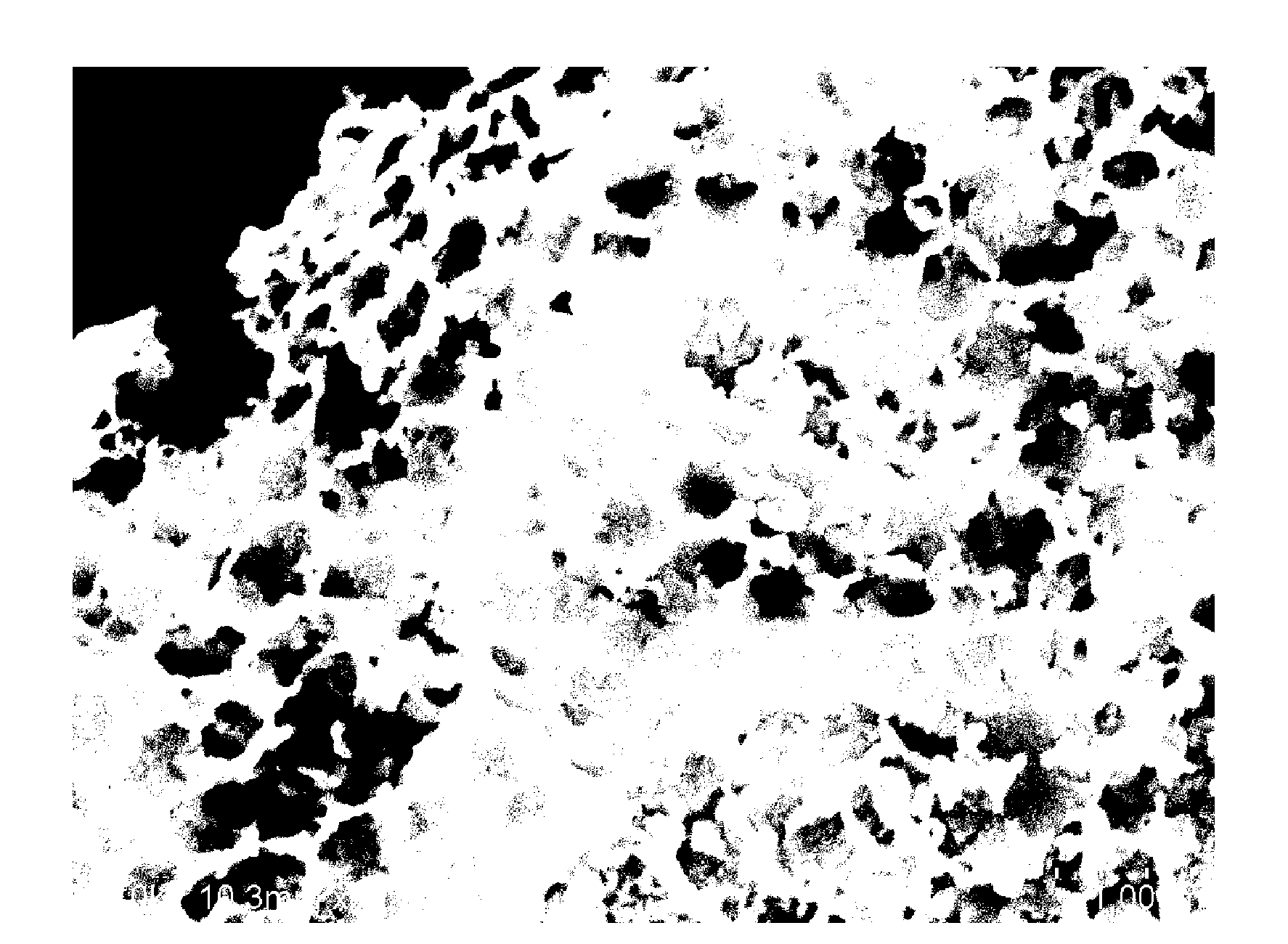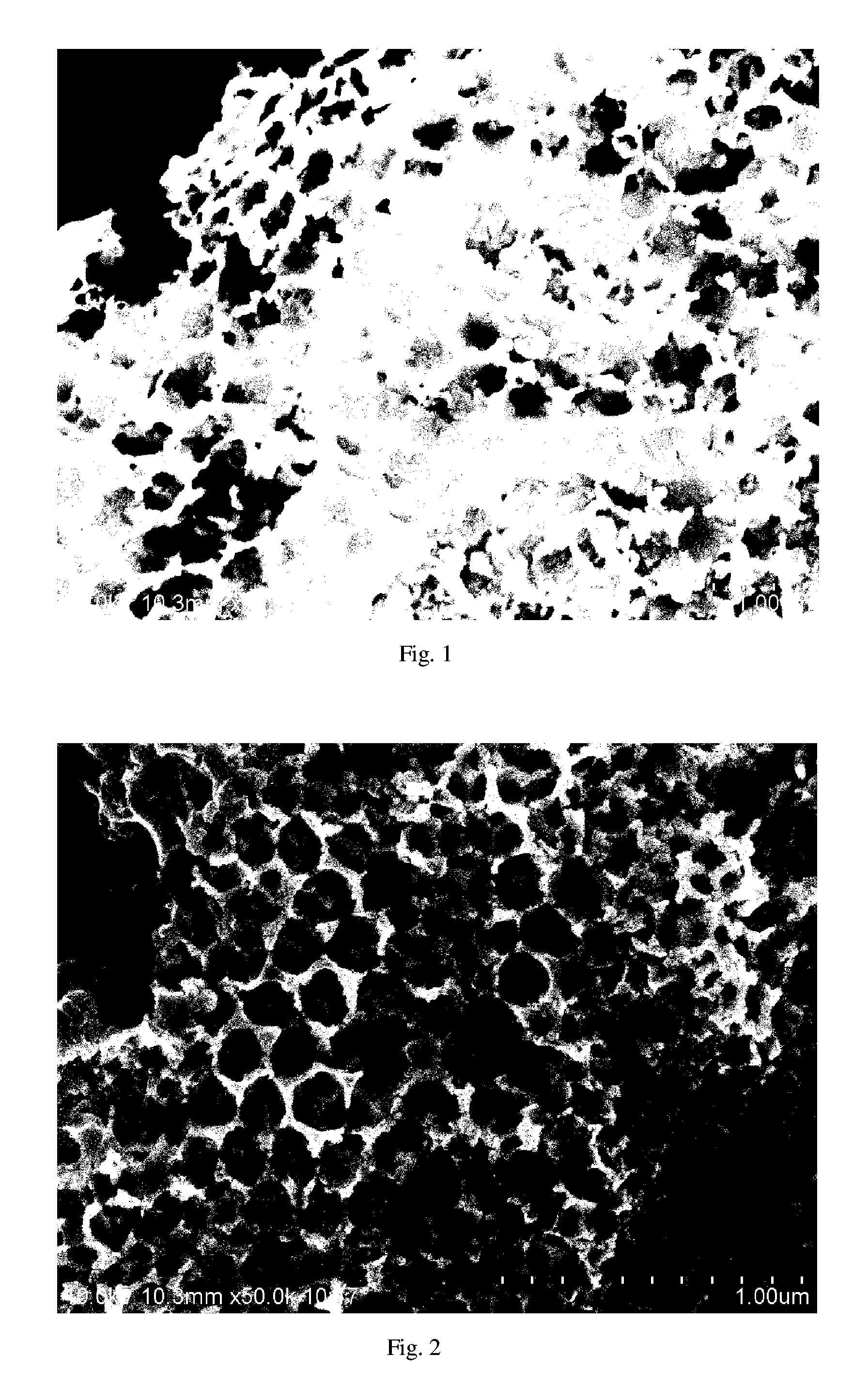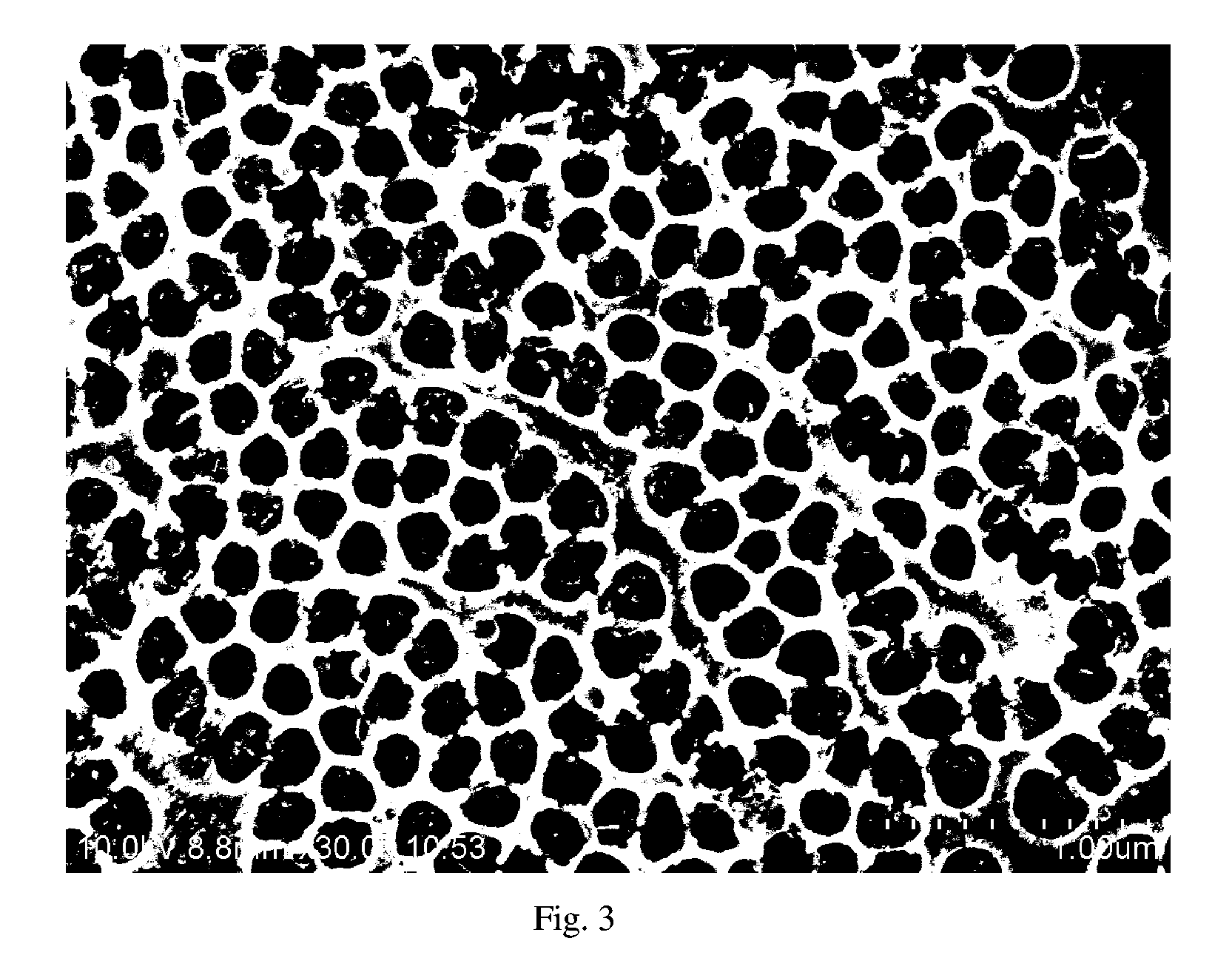Methods of making platinum and platinum alloy catalysts with nanonetwork structures
a nano-network structure and platinum alloy technology, applied in the field of methods, can solve the problems of reducing the service life of nanocatalysts, re-crystallization and sintering, and reducing the catalytic efficiency of catalysts, so as to achieve the effect of reducing the cost of catalyst production
- Summary
- Abstract
- Description
- Claims
- Application Information
AI Technical Summary
Benefits of technology
Problems solved by technology
Method used
Image
Examples
example 1
[0013]Method for making Pt and platinum alloy catalysts with nanonetwork structure using SiO2 nanospheres as the starting material and reduced with hydrogen gas in an oven.
example 2
[0014]Method for making Pt and platinum alloy catalysts with nanonetwork structure using SiO2 nanospheres as the starting material and chemically reduced using chemical reducing agents, e.g., hydrazine, formaldehyde, formic acid, sodium sulfite, and sodium borohydride, etc. The resultant Pt catalyst with nanonetwork structure is shown in FIG. 1.
example 3
[0015]Method for making Pt and platinum alloy catalysts with nanonetwork structure using SiO2 nanospheres as the starting material and fill catalyst by vacuum sputtering.
PUM
| Property | Measurement | Unit |
|---|---|---|
| temperatures | aaaaa | aaaaa |
| diameters | aaaaa | aaaaa |
| temperature | aaaaa | aaaaa |
Abstract
Description
Claims
Application Information
 Login to View More
Login to View More - R&D
- Intellectual Property
- Life Sciences
- Materials
- Tech Scout
- Unparalleled Data Quality
- Higher Quality Content
- 60% Fewer Hallucinations
Browse by: Latest US Patents, China's latest patents, Technical Efficacy Thesaurus, Application Domain, Technology Topic, Popular Technical Reports.
© 2025 PatSnap. All rights reserved.Legal|Privacy policy|Modern Slavery Act Transparency Statement|Sitemap|About US| Contact US: help@patsnap.com



